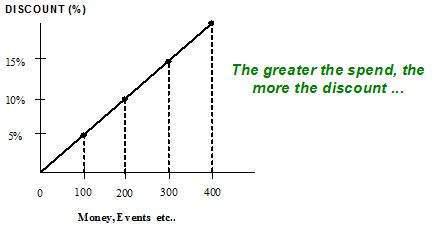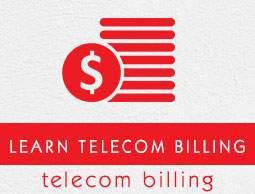Telecom Billing - Discount Application
All discounts alter (most commonly to reduce) the price to be paid for a set of events and/or products. Discount is a way of giving customer money off. Discount defines a set amount of money (percentage or monetary) to be applied to products or usage that meet certain criteria. For example, all the local calls made on a particular day say 01-01-2010 are charged at $0.20.
Discounts can be calculated either during the rating process or during the billing process −
Rating Time Discount − All the discounts given at the time of rating process. These discounts can be given at usage only. An example of rating time discount is "5% off the first hour of all international calls".
Billing Time Discount − All the discounts given at the time of billing process. These discounts can be given on rated usage as well as on product & service charges. An example of billing time discount is "5% off if you spend over $15 within a month".
A pre-itemization discount is one that modifies the price of each event to which it applies to determine a rerated price. This discount also comes in billing time discount category, but this is related to rating of the calls. Other billing time discounts leave the price of the event unmodified. A pre-itemization discount cannot incorporate product charges, only event charges.
Discount Steps and Thresholds
The size of a discount is determined using a series of discount steps and thresholds. Discount steps allow the size of the discount to be changed when particular thresholds are reached.
For example, a discount for telephony events could depend upon the number of minutes spent calling with 10 percent off after 100 minutes and 20 percent off after 200 minutes.
Each discount should have at least one step. Further steps can be added if the discount is required to become more or less favorable with greater volumes. Each discount step can have its discount expressed as either an amount of money or a percentage (but not both).
Simple Discount Types
There could be infinite types of discounts given to the end customer, but it depends on what your billing supports. Following are the simple, but very good types of discounts, which can be offered −
Cross Product Discounts
These are the discounts where a set of products & events determine the discounts for another set of products & events.
For example, "10 SMS free if more than $30 is spent on mobile calls". Here mobile calls determine the discount and SMS product gets the discounts, such type of discounts are called cross product discounts.
Tiered Discounts
These are only applicable to the portion of the set of events or money spent that falls between the assigned discount thresholds. For example, in the following diagram, 0% off for a spend of $0-$100 threshold or 0-100 events threshold, 5% off for a spend of $100-$200 threshold or 100-200 events threshold, etc.

Volume Discounts
These are the discounts based on the number of events or product charges that a certain product generates. For example, in the following diagram, 5% off for a spend of $100 or 100 events, etc. As seen, the greater the spend, the more the discount.

Tax Discounts
Tax discounts provide an alternative method for dealing with some tax exemptions. They are calculated and applied when the account is billed.
Discount Periods & Proration
Most discounts have a discount period associated with them, which can be any number of days, weeks, or months. This period can be used in three ways −
To specify the time over which a threshold value is meant to be reached.
To specify the frequency with which an absolute discount is meant to be applied.
To specify how often the highest usage is determined for discounts with highest usage filters attached.
Discounts could be pro-rated and non-prorated based on the requirement. If discount is pro-rated, then discount will be calculated based on the number of days service has been under use, and in case of non-proration discount, it will be calculated for the whole period for which discount has been configured.
Bonus Schemes
Bonus schemes are methods of giving the customer free events, where the number of free events is determined by the prior usage of or charge for one or more products over a period of time (for example, the previous year).
For example, "Take the Super deal telephony package and get $10 of free calls for every three hours of international calls made in the previous quarter."
There are other ways of giving customers money off, for example, giving a more favorable price plan via a package, reducing the unit rate of a product as the quantity taken increases.
Calling Circle Groups (CUG)
Calling circle Groups define a relationship between users, who are modelled as members and (by default) non-members.
Within this model, a call made by a member of the circle to another member of the circle would be priced using a different rate to that applied to a non-member (or associate) making the same call.
The relationship between the calling parties is determined by the combination of caller identities. Calling circles can span networks if the networks belong to the same operator and a single calling circle can include both mobile and fixed-line users.
What is Next?
We already have covered Billing Processes in the previous chapter. In the next chapter, we will discuss the last part of Invoice Generation starting from raw invoice data to structured bill formation.




